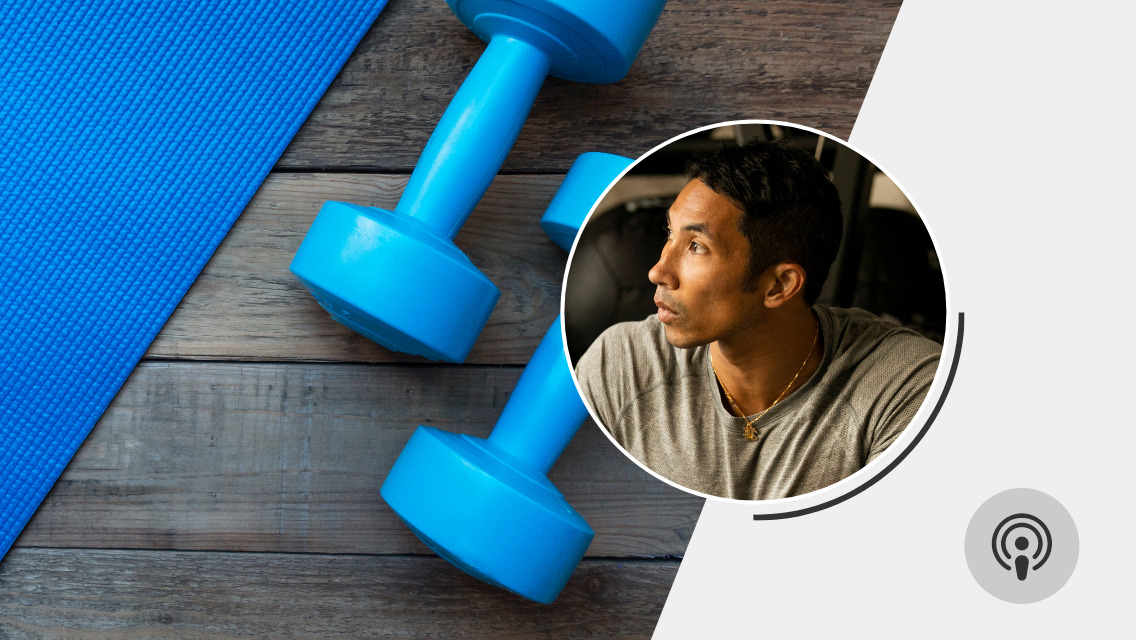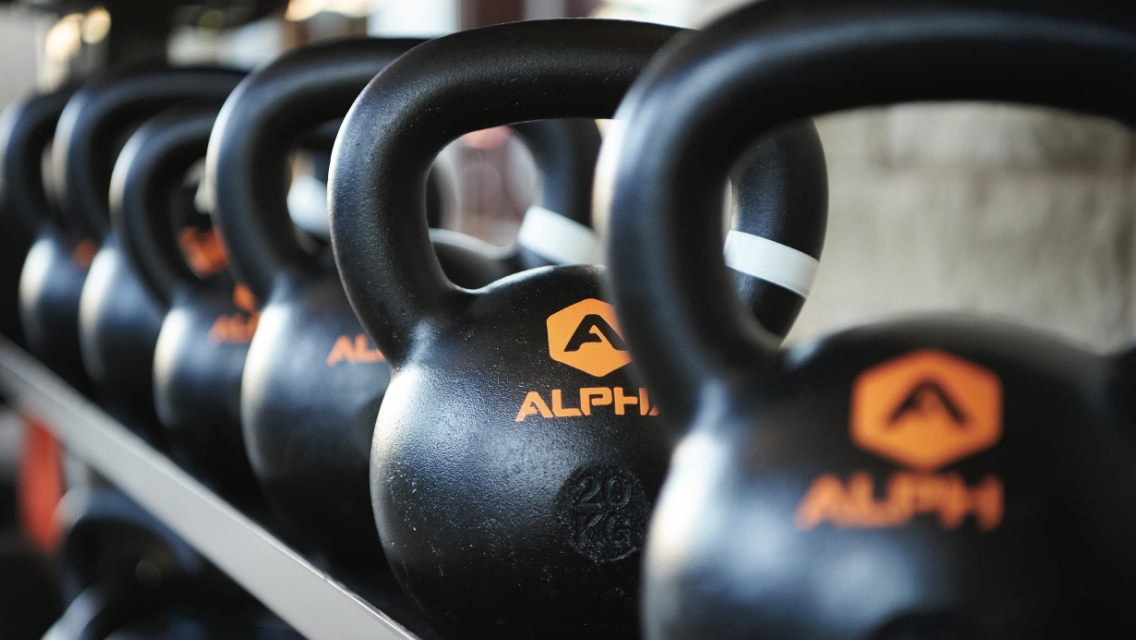I’ve spent the last 15 years as a trainer and coach, and I can tell you that one of the most common themes I’ve heard from clients over that time is that they want to see results quickly.
And when you do an internet search on “fastest ways to lose fat” or the “best exercises for results,” there’s certainly no shortage of promises. Millions of hits result with conflicting advice, and at times, misinformation.
Ultimately, any form of consistent exercise is better than being sedentary and can help drive results. However, most people are looking to learn how to use their workout time efficiently and in a way that helps them progress toward their health and wellness goals.
While there is no quick-fix with fitness and consistency is always going to be key, there is one winning strategy that typically helps clients see results more quickly: strength training.
What counts as strength training?
I’ve often received questions from clients asking if exercises and activities such as yoga, lawn mowing, cycling, and swimming “count” as strength training, since elements of each of these involve pushing against a force.
While each of these examples are challenging and can serve as part of your overall exercise program, the type of strength training we’re talking about here provides a different stimulus to the body. The primary purpose is obvious by its name: to build strength.
True strength training involves targeted use of your body weight or added weight from dumbbells, barbells, resistance bands, kettlebells, or machines. The weight is used to add resistance to controlled movements with proper form to add specific challenge to muscles to get them to respond.
Other terms for strength training are resistance training, weightlifting, or simply just “lifting.” It’s all about safely lifting, pushing, pulling, and moving heavy things, and then repeating that frequently.
Here’s how it helps you see results efficiently and effectively.
Strength Training Builds Tone
Typically, when someone loses a lot of body fat through a caloric deficit without regular strength training and ample protein intake, they find that they don’t quite look the way they had imagined when they first set out to achieve their weight-loss goal.
They’ll frequently report that they’re not as toned as they would have hoped. However, when most people say they want to be toned, what many may not realize is that “toning” actually requires gaining muscle.
Building lean tissue from skeletal muscle is what creates a firm shape and physique. It does not automatically make you bigger or bulkier. For those following a hypertrophy-style training program that is specifically designed to help build muscle size, it takes a purposeful, calorically-dense nutrition approach in conjunction with the training plan to achieve a bulkier-looking muscle mass over a long period of time.
For everyone else, this style of training typically results in a physique that we commonly see people working toward.
Strength Training Helps Control Blood Sugar, Energy, and Cravings
Your internal health impacts your external results from your program — and for the one in three U.S. adults with impaired blood-sugar control, weightlifting has some unique properties.
Higher blood-sugar levels can cause cravings for sweets and starches, contribute to more belly fat, decrease energy levels, and impair sleep. But each and every time you lift weights, your cells are likely more immediately responsive to insulin (which lowers blood sugar) for the 16 hours following your sweat session. Plus, over time, maintaining and gaining lean muscle mass can serve as an antidote to high blood sugar.
This becomes especially important as we get older and want to see results. Age-related muscle decline is a real concern, and clearance, or lowering, of blood sugar is better in strength-trained muscles.
The positive impact of training on blood sugar can happen remarkably quickly. In fact, a mouse study showed that insulin sensitivity and blood-sugar stability improved in as little as 15 days, even before changes in weight occurred. While findings of mouse studies can’t automatically be applied to humans, the results are encouraging.
Strength Training Improves Your Hormonal Landscape
As mentioned above, your underlying health can impact how quickly you see results from a program — or not. And your balance of hormones such as cortisol and testosterone can be particularly impactful on how you feel, look, and perform.
In the case of both of those hormones, regular, periodized, and progressive strength training in the context of a broader exercise program is beneficial.
For those who are stressed out and have cortisol issues, finding the right training approach can feel tricky. Exercise further raises cortisol, but being sedentary causes imbalances too. Focusing on basic, compound movements with plenty of rest in between is an effective method for training without further spiraling result-stopping stress hormones.
Regular strength training also promotes healthy testosterone levels, which can drive results and increased energy in both men and women. Since higher body fat, stress, a lack of sleep, alcohol intake, and ongoing calorie restriction all contribute to low testosterone, many could benefit from the support of strength training. Studies have shown that strength training’s impact on testosterone can be significant — and it can happen not only transiently from each workout, but chronically over time.
Strength Training Changes How You Burn Calories
Most people put too much stock into the impact that their individual workout calorie burn has on their results, particularly when it comes to high-intensity cardio.
Not to be mistaken: cardio is amazing for its benefits for longevity, mood, cardiovascular health, immunity, and recovery, but using cardio for fat loss alone does not provide the best bang for your buck in terms of effort. Read more here: “How Much Cardio Do You Really Need?” and here: “Becoming an Effective Fat Burner: How to Build Your Aerobic Base”
Workout calories are interesting to track, but a bit short-sighted. Your overall calorie burn each day is the summation of your resting metabolic rate (the calories required for your body to do basic functions while at rest), your calories burned doing day-to-day activities, the calories you burn digesting food, and your exercise calorie burn. Those are listed in order of greatest to least impact on total daily calorie burn, with your resting metabolic rate being more significant than all the other factors combined.
To boost results quickly, the muscle-building effect of strength training pulls several levers and can help your overall calorie burn in multiple ways: It increases your body’s tolerance to carbohydrates, modestly improves your calorie burn when you’re resting, and gives you more power in your workouts to work harder and burn more energy with less effort.
Think of it as a more global, far-reaching way to boost your natural calorie burn.
Strength Training Can Be Motivating
From my experience with clients, hitting personal bests with strength training unlocks new levels of self-confidence. It has a special way of changing how people carry themselves, not just physically, but emotionally as well.
For those newer to lifting, it’s common to see relatively frequent jumps in the amount of weight someone can lift. Showing up consistently for themselves in their workout routine (perhaps for the first time ever) yields an almost-immediate, immensely motivating return on investment for their efforts when they see their deadlift go up by 10 pounds or their bench press boosted by three reps they couldn’t do the week prior.
If you’re intimidated by strength training or the thought of using weights and machines, a simple and straightforward plan using your bodyweight might be the best place to start. If you’re a Life Time member, you have access to the complimentary three-week Bodyweight Strength program available via the Life Time Digital app. It’s a perfect kick-start for beginners.
Overall, strength training is crucial to implement, and it develops fortitude and resilience. And when an exercise program does that, staying consistently active to drive results is a whole lot easier.
How to Implement Strength Training
Ideally, you want to lift three days per week at minimum. And with the right program, you can safely and effectively lift most days of the week as well. If you’re lifting three days per week, you’ll want a total-body program, such as Coach Kemma’s zero-equipment Bodyweight Strength program or Coach Anika’s Lean + Tone program that uses dumbbells. Both are three-week-long programs and are available through the Life Time Digital app.
If you can work in four-to-five days per week, you can utilize a program that splits up body parts throughout the week to add more volume. Coach Nick’s 6-Week Shred program (also in the Life Time Digital app) provides just that, using in-club equipment to add even more challenge. This style of training is a particularly effective approach to gaining both muscle and strength, as it allows a high number of exercises per muscle group and a high number of sets of each exercise you perform.
The absolute best way to determine the perfect balance of training for you is to have a Dynamic Personal Trainer evaluate your specific history, health background, and goals to determine a plan fully customized to your needs.
For those who aren’t ready to work with someone one-on-one, Life Time’s feature coaches offer several digital program offerings (as mentioned above) that are included in all Life Time memberships delivered through an experience in the Life Time Digital app.
Read more about the tried, true, and effective routines that are some of our top member favorites due to the results they produce:
For those brand-new to strength training looking for a zero-equipment option: “Everything You Need to Know About Bodyweight Strength With Coach Kemma”
For those looking for a foundational strength routine using dumbbells only: “Is Life Time’s 21-Day Lean + Tone Program Right For You?”
For those looking for a more intermediate-to-advanced routine using a range of equipment: “Is Life Time’s 6-Week Shred Training Program Right For You?”





